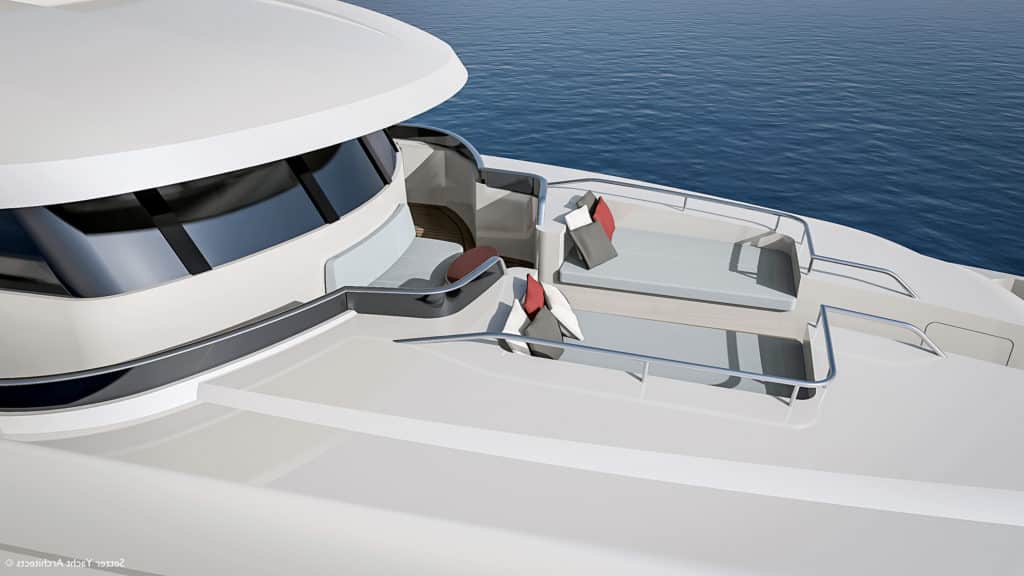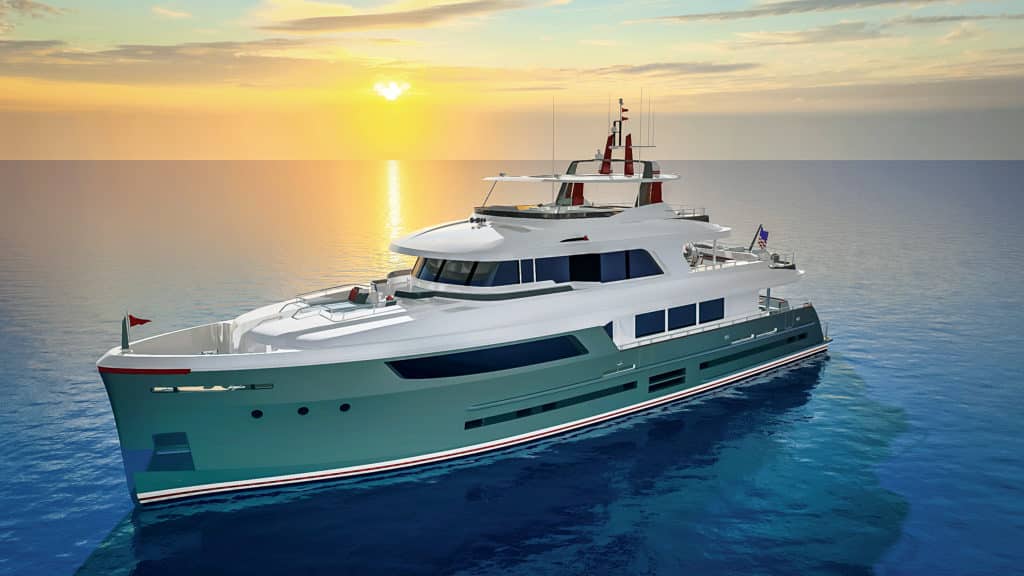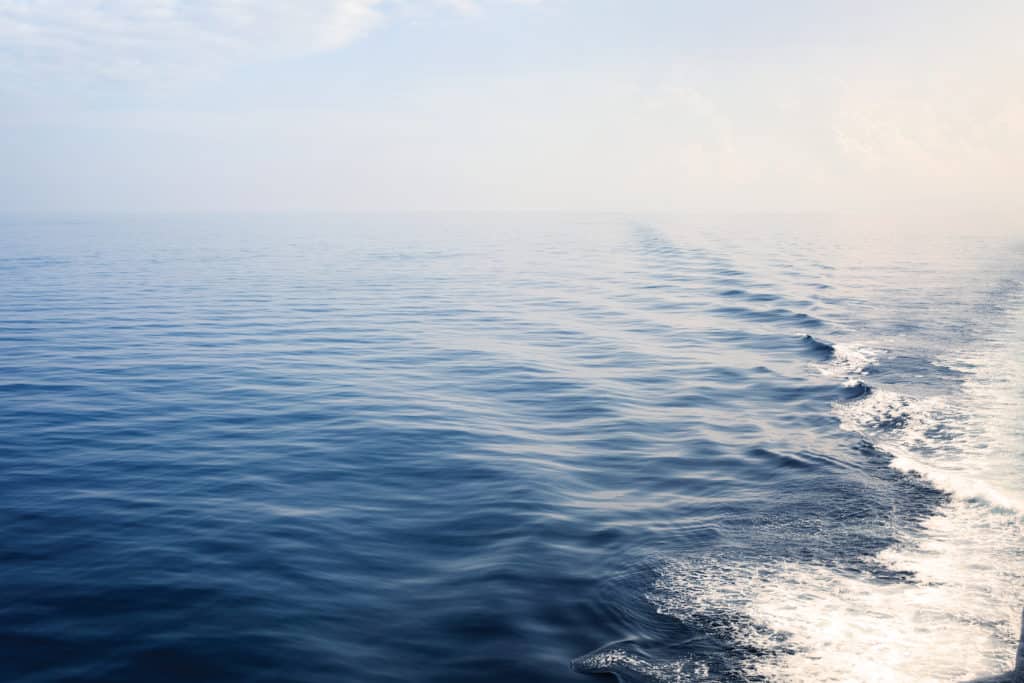
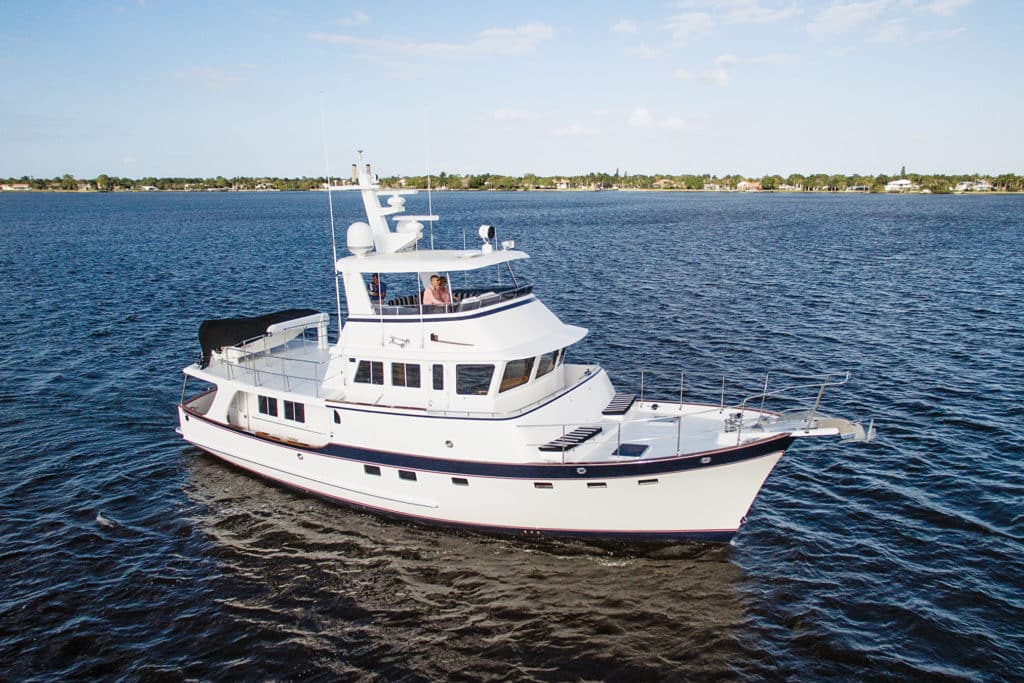
The great blue beyond.
A lot of us dream about venturing into it, but only the luckiest among us have yachts actually built to get us across oceans. True bluewater cruising requires mission-specific vessels, the kind that look different on the docks and whose features can make a major difference a few hundred miles offshore. If the waypoints you intend to reach are along the path less traveled, then a yacht built for more than day cruises is a must. Check out the following models, any one of which can turn long-distance cruising dreams into reality.
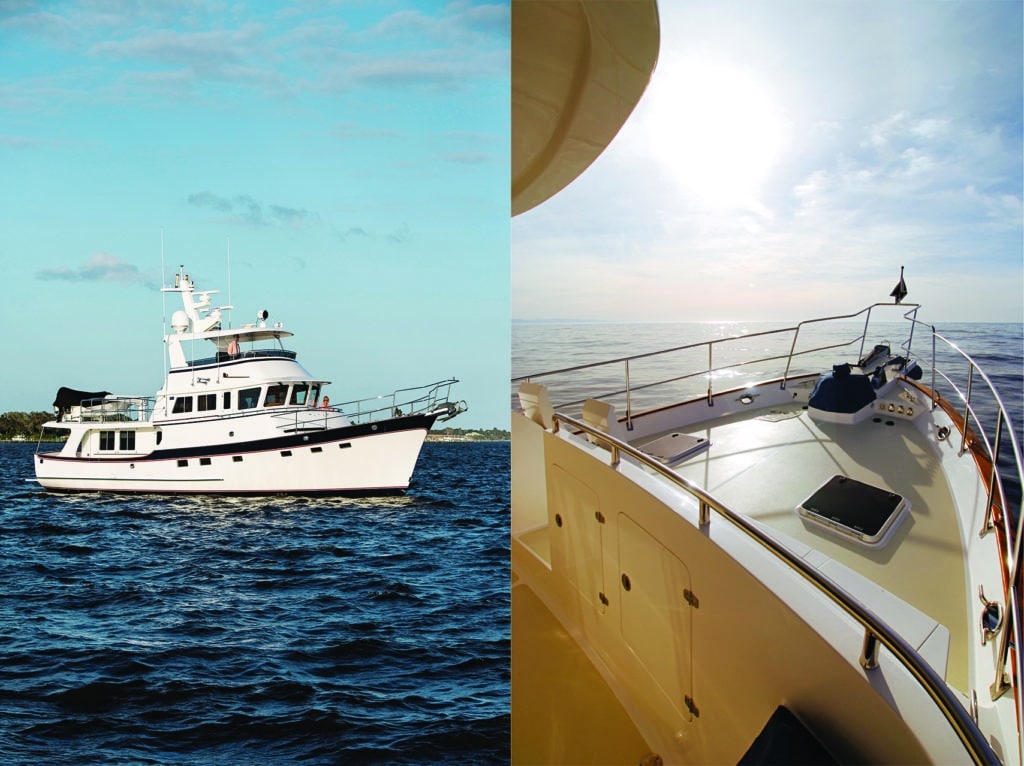
trawlers are often associated with high-seas adventurers. Many yachtsmen who own them prefer to pick the second star to the right and go straight on till morning. Or they live aboard full time and follow their fancy: true sea dogs whose independence should be admired. They are a special breed, and they need an equally special breed of yacht made to cross oceans. Larry Polster, Kadey-Krogen’s vice president, is passionate about his company’s yachts.
“To me, [the term] trawler is about the styling of a vessel,” he says. “The trawler’s dedicated pilothouse placement and function gives the vessel its trawler look, and the hull form built for long-range cruising sets the trawler apart from other craft. “Unfortunately, many people are of the opinion that you can just run a well-constructed boat at 8 knots and that makes it a long-range cruiser,” he says. But a true “long-range cruiser” must have a full-displacement hull form, ballast and a 3,000-nautical-mile range.
The ballast is critical, Polster says, because it has to do with the vessel’s righting moment, or “the force that is exerted to right the boat when it heels.” Without ballast, a boat can become susceptible to a big wave. The full-displacement hull helps with down-sea performance too.
Supporting Kadey-Krogen’s hull design is a modern build incorporating impact-resistant fiberglass mat that contains Twaron, which is a fiber often used to give body armor its bulletproof capability. It is reportedly five times stronger than steel and up to 60 percent lighter than ballistic steel.
A comfort factor also comes with this style of yacht. Polster says the trawler appeals to those who realize that boating doesn’t have to equate to camping. It’s a craft that allows for home-style furniture and full-size appliances.
Kadey-Krogen says it has seen a rise in interest from owners of sport-fishers or express-style yachts, people who are looking to “slow down and smell the salt air.”
The biggest benefit to the trawler and trawler lifestyle? As Polster says, “It is the best waterfront money can buy, and when you get tired of your neighbors, the scenery or the weather, you can just leave and take your home to a new location.”
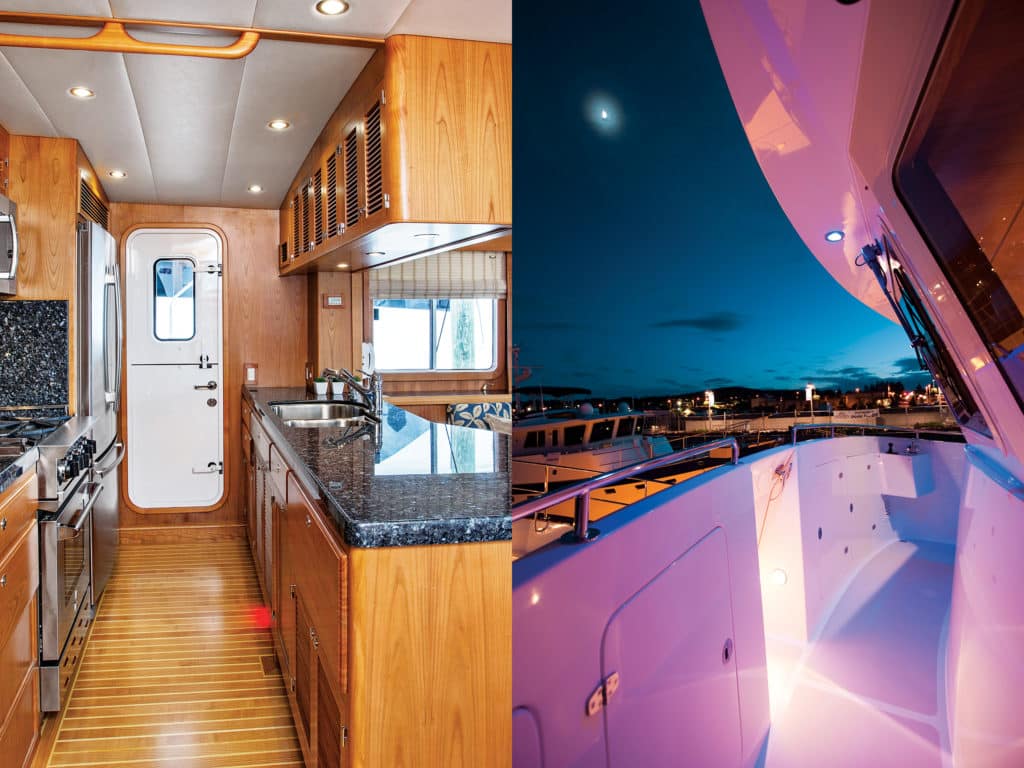
Year in and year out, yacht owners seek vessels that can chase sunsets and make their long-range cruising dreams a reality. Outer Reef Yachts builds vessels for those die-hard yachtsmen.
The builder says these owners want to “go to locations others aren’t able to access.” They are interested in extended journeys without limits. To make that happen, Outer Reef says, yacht safety and robust yacht composition are the priorities.
Outer Reef prefers using a semidisplacement hull design because, the builder says, the shape offers the best of both worlds. While most semi- displacement vessels do not generally cross oceans, many are capable and have the range, stability and capability to do so.
A semidisplacement vessel can take advantage of increased power and achieve greater speeds than a full-displacement hull. Applying additional horsepower does consume more fuel, but typically most semidisplacement vessels only take advantage of this speed when required, such as outrunning foul weather or transiting a rough inlet in daylight hours.
The builder says semidisplacement yachts often operate in displacement mode, and they’re fuel efficient — sometimes even more fuel efficient at displacement speeds than full-displacement vessels of the same length overall.
The long-range cruising lifestyle is an incredible gift. Many of our owners aspire to spend months and years cruising — and, in extreme situations, make their yacht and life on the water their permanent residence.
A semidisplacement hull form has less draft and therefore less wetted surface. The result? Less horsepower required to move the yacht through the water. A reduced draft is advantageous when anchoring in a relatively shallow-water area too.
Outer Reef says it sees a trend in this market segment toward a younger demographic. These owners are also looking for a new design aesthetic.
In response, Outer Reef, working with Setzer Yacht Architects, developed its Trident Series, which runs from 62 feet to 106 feet length overall. A hallmark of this voyager’s style is a wave-piercing plumb bow, which increases interior volume. Outer Reef says that the Trident models’ interior volumes are on par with more traditional yacht designs in the 115- to 120-foot range, resulting in increased living space and, in turn, overall comfort when making long passages.
If you’re looking to find a patch of blue water to call your own, Outer Reef aims to have a model and LOA that fits your dreams perfectly.
